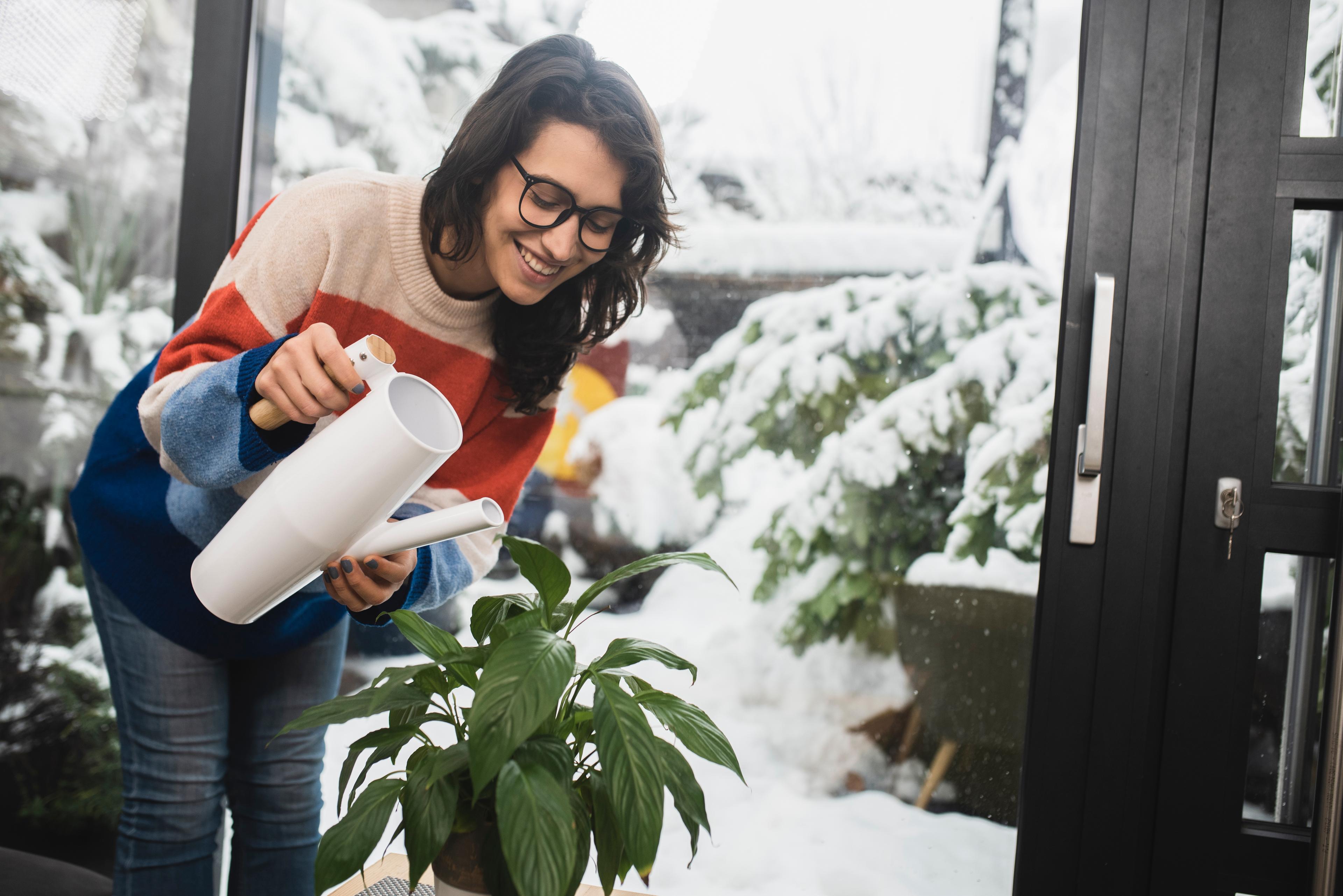How to Start an Indoor Winter Garden
Shandra Martinez
| 3 min read

There’s a lot of things to love about Michigan’s winters, but the halt to our outdoor gardening season is not one of them. With most gardens buried under a blanket of snow, the winter months can leave us dreaming about home-grown lettuces, microgreens and other leafy vegetables and herbs. Sure, you can buy these greens at your local grocery store, but it’s not the same as tending your own growing things. If this feels like what you’re experiencing, it may be time to start an indoor winter garden.
For most people, indoor winter gardens are a more dialed-in type of growing. Plants are smaller and options are fewer. The focus is usually on leafy greens, an abundance of herbs and other compact plants like cherry tomatoes, small carrots and radishes. Once you decide what you want to grow and order your selection of either seeds or tiny starter plants, then it’s time to determine the best set-up for an indoor garden in your space.
Natural sunlight
If your home is lucky enough to have an array of south-facing windows, or at least a window arrangement that will allow more than a half-day of full sun, see if you can utilize that space for indoor gardening. Light is the key ingredient for your indoor garden. Just like when you garden outside, how much sunlight your growing plants receive indoors each day will guide their growth. According to a winter gardening article by the University of Illinois Extension service, plants grown indoors need at least six hours of direct sunlight each day.
Some other tips for setting up an indoor space in natural light:
- Spread a small tarp or waterproof mats in the growing area to keep any spilled water and dirt off your floors.
- Select an assortment of pots or containers that fit what you want to grow.
- Sow the seeds and cover with potting soil mix according to the individual plant seed’s directions. Remember not all vegetables and greens are planted at the same depth. If using small transplants, plant them according to the package directions.
- Water regularly.
- Keep the indoor temperature at 60 to 70 degrees.
- Keep vegetable plants away from indoor houseplants or indoor flowering plants, which may have insects like aphids that can get on your vegetables.
Seed trays and grow lights
If you don’t have an area in your home that gets enough natural light to keep indoor garden plants happy, there are other options. Many home gardeners already have indoor fluorescent lights that simulate natural sunlight and seed-starter trays that they use in the early spring. You can create an indoor garden area wherever you have space to set up your containers and grow lights. To grow plants indoors like this, follow these tips:
- Set up the fluorescent lights 6 to 12 inches above the plants.
- Plants should remain under these lights for 12 to 14 hours each day.
- Avoid putting plants near a heat vent, radiator or space heater.
- Make sure the air has enough humidity to ensure good growth.
Indoor garden in a kit. Indoor gardening kits available online or at garden center stores make winter gardening a snap. Many high-tech kits come with seeds - or plants - and their own light system. Most just need to be plugged in and have some water added to get you on your way to growing an abundance of herbs, lettuces or microgreens. These kits are typically much more expensive than an indoor garden set-up you create on your own, but they are perfect for people who want an indoor winter garden’s bounty, but not the gardening work.
Photo credit: Getty Images





